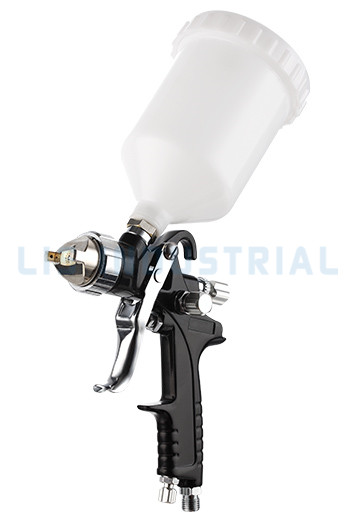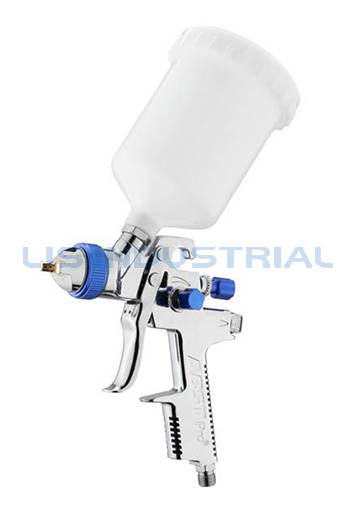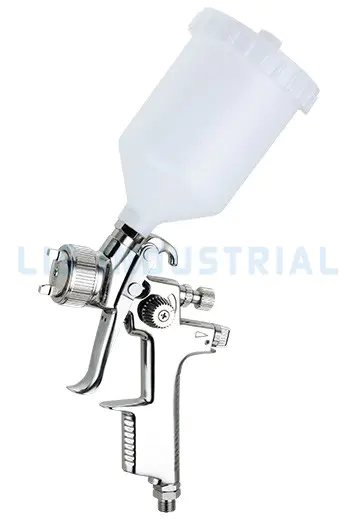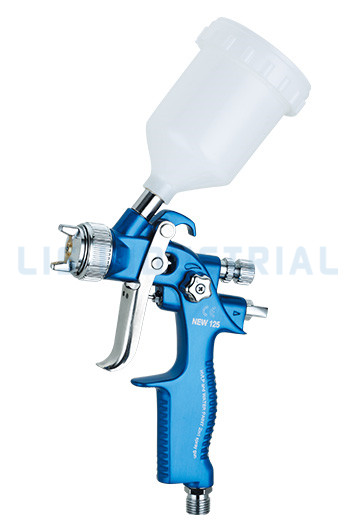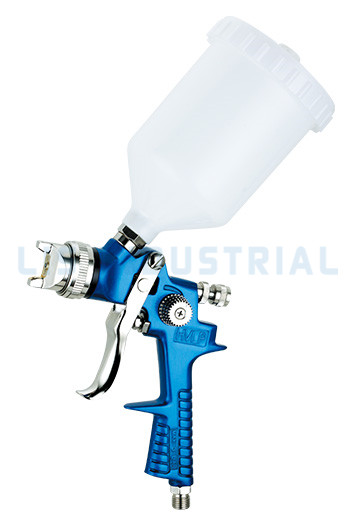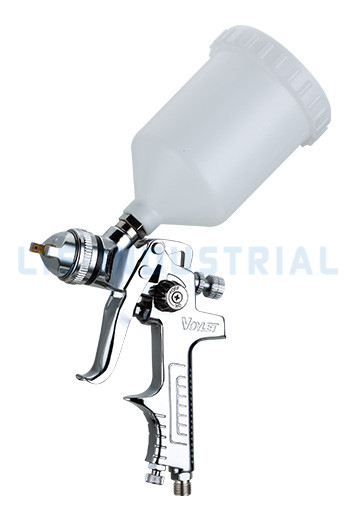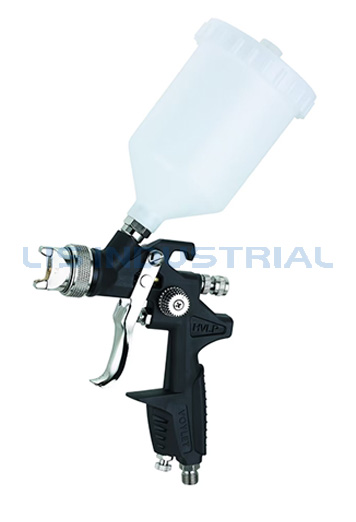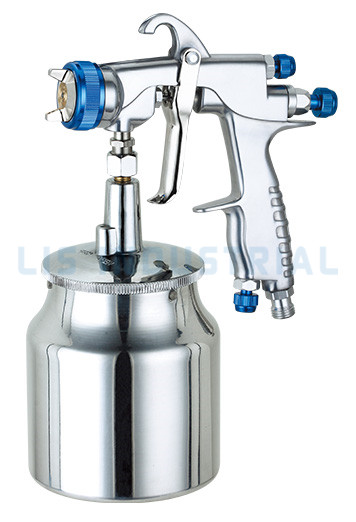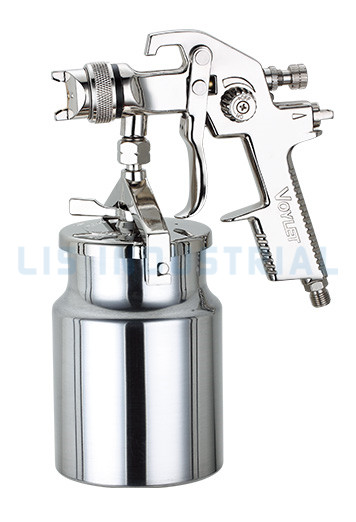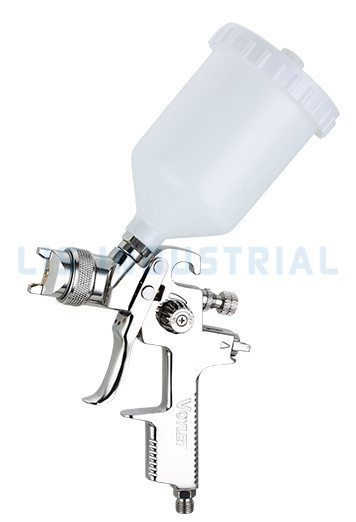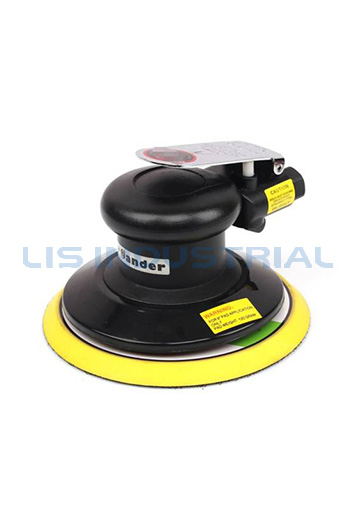1. The role of sandblast gun
As a key equipment for industrial surface treatment, sandblast guns mainly play five core functions: surface cleaning can remove metal oxide scale (rust removal efficiency of 4-8㎡/h), old coating (peeling thickness 0.1-2mm) and welding residues to meet industrial standards; surface roughening treatment can form an anchor pattern depth of 3-50μm on the substrate, improving the coating adhesion by more than 300%; shot peening can produce a 0.1-0.8mm compressive stress layer on the surface of metal parts, and the fatigue life is increased by 5-8 times; fine engraving function can achieve pattern etching with an accuracy of 0.05mm; special pretreatment can create an ideal base for subsequent processes such as electroplating and spraying. Compared with chemical treatment methods, sandblasting operations are pollution-free and have no risk of hydrogen embrittlement, and can handle parts that are difficult to reach by traditional methods, such as the inner cavity of complex special-shaped parts.
2. Working principle of sandblasting gun
Sandblasting gun works based on the principle of fluid dynamics and abrasive impact. Compressed air is accelerated through the nozzle, and negative pressure is formed in the mixing chamber to suck in the abrasive, forming a two-phase flow to impact the workpiece at a speed of 80-120m/s. The core components include: power system (the air compressor needs to meet the air supply margin of 3:1), conveying system (wear-resistant pipe lining 1.5mm thick polyurethane), control system (precision pressure regulating valve error ±0.02MPa) and recovery system (cyclone separator efficiency ≥92%). Some models are equipped with abrasive flow sensors (accuracy ±5%) and compensation devices to ensure uniform treatment. Special applications such as titanium alloy treatment require nitrogen protection sandblasting to avoid high-temperature oxidation; glass etching requires precise control of the spray angle to obtain a uniform diffuse reflection effect.
3. Sandblasting gun maintenance guide
Daily maintenance requires the implementation of the "three checks" system: check the gas line (gas tank daily drainage), check the abrasive (screening to remove fine powder below 0.1mm), and check the circuit (ground resistance ≤4Ω). Maintenance of key components: The tungsten carbide nozzle rotates 120° every 8 hours to extend its life. After 200 hours of cumulative use, a projector is required to detect the deformation of the aperture; the wear-resistant tube is turned every 50 hours for use, and the total life is about 800 hours; the oil-water separator filter element must be replaced when the pressure difference is greater than 0.08MPa. Seasonal maintenance: an abrasive drying process needs to be added in the rainy season; -30℃ low-temperature grease should be used in winter; all pneumatic components should be cleaned after working in windy and sandy weather. Deep maintenance is performed every 500 hours, including disassembly and cleaning of the solenoid valve (gasoline is prohibited), calibration of the pressure gauge, and detection of the throat diameter of the Venturi tube. Long-term out of use requires sealing of each gas line interface with anti-rust oil, and no-load operation for 10 minutes every month to maintain the flexibility of the mechanism.
4. Fault diagnosis and solution
The fault of the gas line system is manifested as a pressure fluctuation greater than 10%. Possible reasons include: the dew point of the refrigerated dryer is too high, there are too many right-angle elbows in the gas pipe, and the diaphragm of the pressure regulating valve is cracked. When the abrasive problem causes uneven processing, it is necessary to check: abrasive mixing ratio, screen integrity, and material humidity. There are three common mechanical failures: when the vibration value caused by the impeller imbalance is greater than 4.5mm/s, dynamic balance correction should be performed; when the bearing makes abnormal noise (sound pressure greater than 85dB), the SKF6205-2RS with seal should be replaced; when the seal fails and the sand leakage is greater than 3g/min, the V-type combined seal should be updated. Special working conditions: the "black spots" on the surface of aluminum alloy parts are caused by iron impurities in the abrasive, and white corundum should be used instead; when ABS plastic parts are deformed, the air pressure should be reduced to 0.3MPa and plastic pellets should be used instead; when working in a small space, the CO2 concentration exceeds the standard and a forced exhaust system (air exchange volume ≥20 times/h) should be configured. Safety warning: Under no circumstances should sandblasting guns be used to clean clothes. Abrasives can penetrate ordinary work clothes within 0.5 seconds at a pressure of 0.6MPa.

 Search
Search
 English
English 中文简体
中文简体 Deutsch
Deutsch